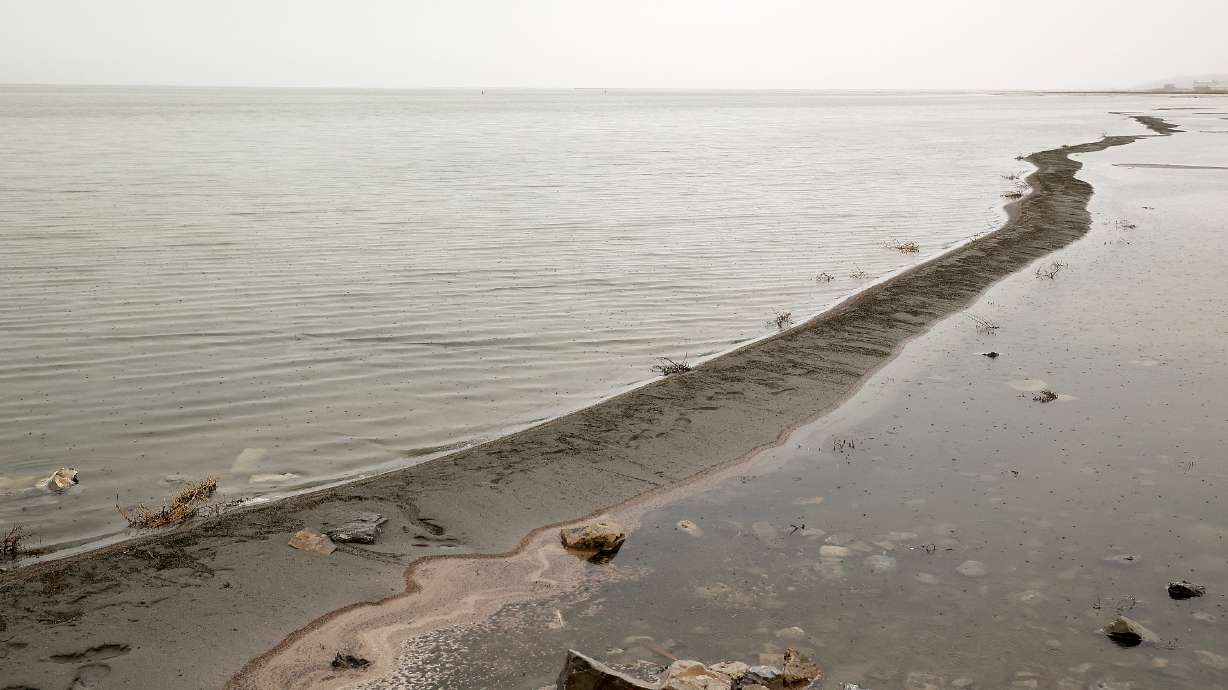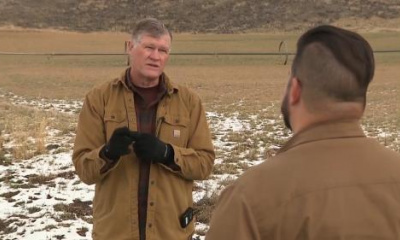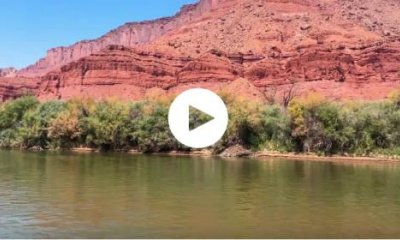SALT LAKE CITY — The Great Salt Lake remains a key focus in Utah even if its water levels are in a much better position than when they hit an all-time low in 2022.
A few bills specifically addressed the lake during this year's legislative session, which wrapped up on Friday.
The biggest of those that passed is HB453, sponsored by Rep. Casey Snider, R-Paradise. Barring a veto by Gov. Spencer Cox, the new law essentially tightens regulations on mineral extraction from the lake so the industries' water consumption is better managed. It also guarantees that revenue generated by mineral sales will be allocated back into the lake for conservation and management efforts, according to lawmakers.
"Over the past few years, the state, local governments, private sector and everyday citizens have done their part to ensure the Great Salt Lake is around for future generations," Snider said in a statement on Thursday. "HB453 is another huge step in the right direction as we work to keep water in the lake."
"I am grateful for the good-faith efforts and voluntary agreements of the mineral extraction companies to work with the state to address the concerns of a shrinking lake," he added.
The Utah Legislature also passed SB270, sponsored by Sen. Curtis Bramble, R-Provo. It directs $1.5 million toward the Utah Division of Forestry, Fire and State Lands for a study of Utah Lake to see if there are ways to improve water flow between it and the Great Salt Lake. The report is to be completed and presented to a Utah Legislature interim committee by November 2025.
Utah lawmakers also directed nearly $22 million in one-time funds for water infrastructure projects tied to the Great Salt Lake through HB3, the state's budget bill.
The Great Salt Lake's southern arm is currently at 4,193.7 feet elevation, close to where it peaked after last year's snowpack runoff. Its northern arm remains at 4,190.5 feet elevation, per U.S. Geological Survey data.
What missed the cut
Lawmakers considered a few other bills tied to the lake this year; however, these missed the cut:
- SB196, sponsored by Sen. Nate Blouin, D-Salt Lake City, would have directed the Great Salt Lake Commissioner's Office to create a plan to manage wet water years so more water could go into the lake during those years. It cleared a Senate committee meeting in February but never received a full vote in either the Senate or House.
- HB448, sponsored by Rep. Raymond Ward, R-Bountiful, required the Utah Division of Water Resources to monitor water optimization efforts funded by the Legislature. It cleared the House but did not receive a Senate hearing.
- SB75, sponsored by Sen. Derrin Owens, R-Fountain Green, sought to provide a post-production tax credit for mineral providers, including Great Salt Lake's brine shrimp, to generate more mineral production in the state. It cleared the Senate and a House committee before it hit a snag and never got voted on again.
Other bills with Great Salt Lake water ties
A few other new water bills could also have some impact on the lake. SB18, sponsored by Sen. Scott Sandall, R-Tremonton, provides agricultural water users an option to lease or sell the value of their saved water based on measures approved by the state engineer.
It also makes some technical changes to the state's agriculture water optimization program, increasing the amount the state will provide for drip or automated surge irrigation — from 50% of the project cost to 75% — as a way to better incentivize those types of projects. Both could lead to more water headed to the lake.
HB11, sponsored by Rep. Doug Owens, D-Millcreek, limits the amount of nonfunctional turf, such as parking strips or medians, that government entities can install at new construction within the Great Salt Lake Basin. It also restricts some overheard spray irrigation uses.
Lawmakers also passed HB249, sponsored by Rep. Walt Brooks, R-St. George, which restricts the ability to apply legal personhood to a body of water. Some conservation groups pleaded with lawmakers to vote against the bill when it was introduced in January, arguing that personhood could offer an avenue to give the Great Salt Lake additional protections.
In the end, some groups weren't satisfied with how the Great Salt Lake was handled in the session.
The Utah Rivers Council awarded Utah a "D-" grade for all its 2024 water bills. Zach Frankel, the council's director, called it one of the "most destructive" sessions for the Great Salt Lake in recent history. Some of that has to do with the group's opposition to SB211, which creates a water council that oversees future water projects.
"Legislators supported terrible water bills that are damaging to the Great Salt Lake and opposed good water bills that could conserve water," the organization wrote in its report.








